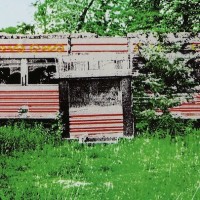“Rich Girl” was the charttopping hit off Bigger Than Both of Us, released in the summer of 1976. But “Do What You Want, Be What You Are” better encapsulated the Hall and Oates aesthetic.
“That’s who we are,” John Oates agrees, in an exclusive Something Else! Sitdown. “If you look back at our careers, we’ve done weird stuff. We were completely outside the box in a lot of ways — from Whole Oats and Abandoned Luncheonette to War Babies then to recording in LA and wearing makeup, then hard rock — and pop. We look at ourselves as musicians, and we don’t really care about categories. The world does, and we try to work with it.”
Hall and Oates’ first albums had focused on singer-songwriterly folk, their next one was more glammy. They reached the top of the pops with the soulful pop of Bigger Than Both of Us, but didn’t even consider resting on those laurels. Instead, Hall and Oates then delved deeper into rock sounds. By the turn of the ’80s, they were incorporating new wave.
Indeed: Do what you want, be what you are. Some of these musical turns were successful, some not, but all of them were — and are — endlessly fascinating. Few groups as commercially successful as Hall and Oates have so steadfastly followed their own muses, and they’ve been rewarded with one of the most loyal fanbases in music. More recently still, Hall and Oates earned a long-overdue nod by the Rock and Roll Hall of Fame.
“We’ve always been very independent, and I think only now are we being appreciated for that independence,” Oates tells us, but with a cautionary tone. “Unfortunately, if we were starting out in today’s world, we would never have made it — because of that very fact. I’m just kind of doing what I feel like doing, and I am very fortunate that I’m allowed to do that.”
- How Deep Cuts on ‘Music From Big Pink’ Underscore the Band’s Triumph - July 31, 2023
- How ‘Islands’ Signaled the Sad End of the Band’s Five-Man Edition - March 15, 2022
- The Band’s ‘Christmas Must Be Tonight’ Remains an Unjustly Overlooked Holiday Classic - December 25, 2016




